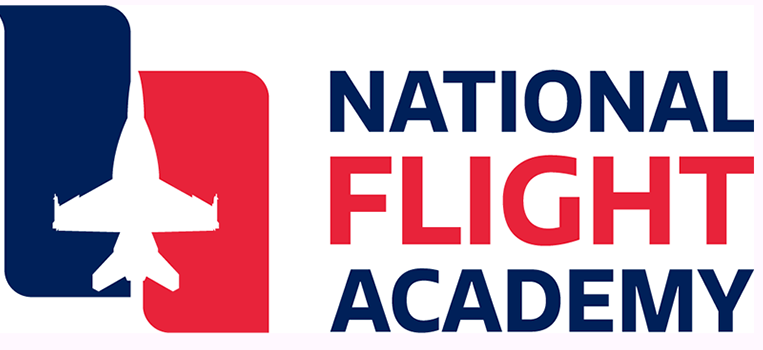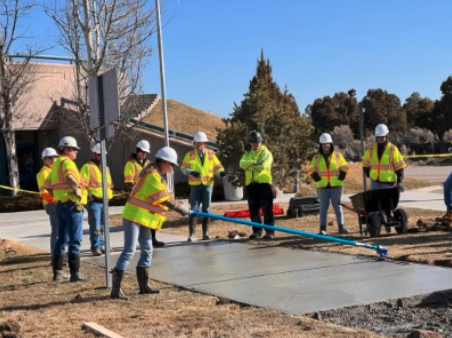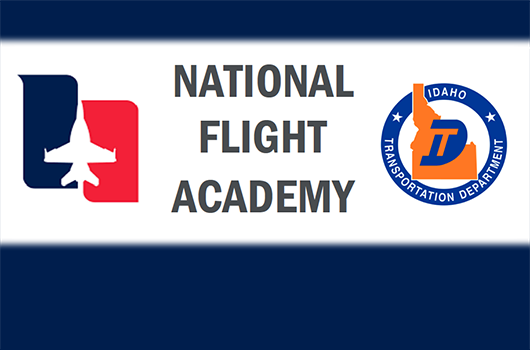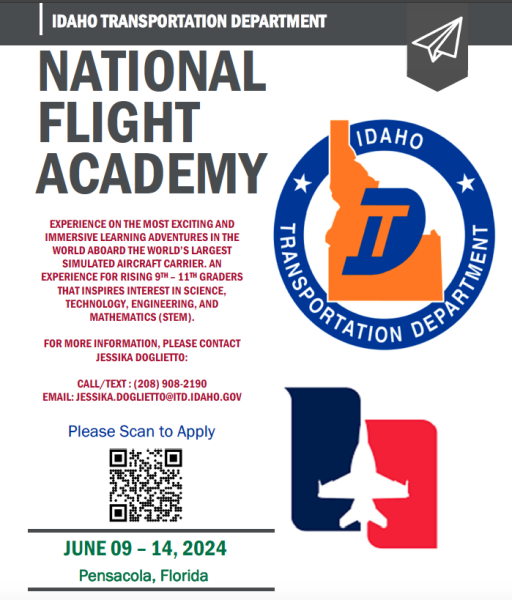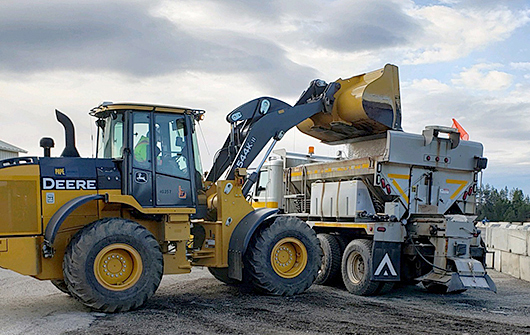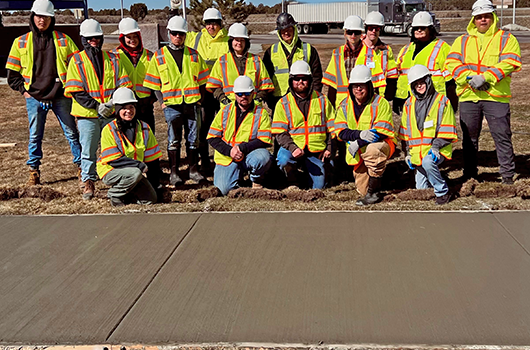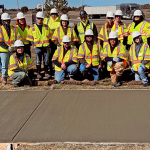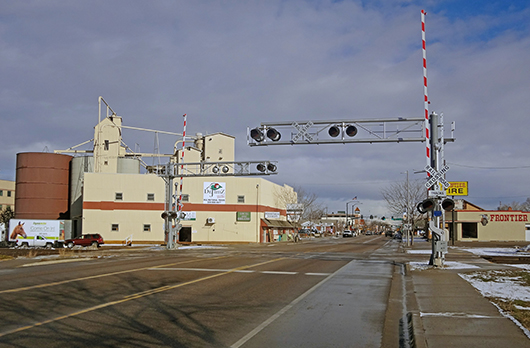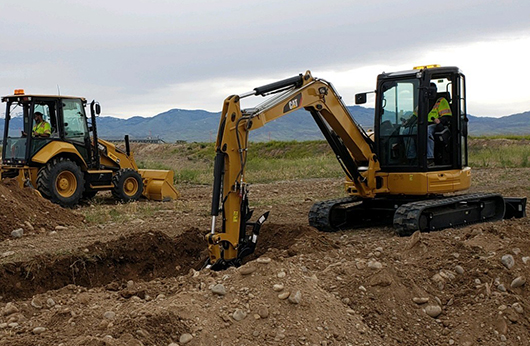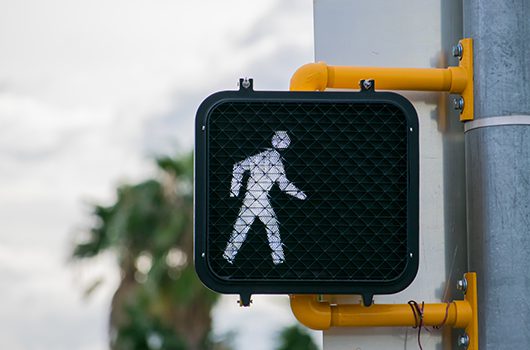BOISE – Idaho’s Workforce Development program, spearheaded by ITD’s Civil Rights section, recently won a national award for the effort from the U.S. DOT’s Federal Highway Administration. Idaho was one of only three states to win the State Transportation Innovation Council (STIC) award. Idaho’s award was the Idaho Career Opportunities – Next in Construction (ICONIC) training program, held in multiple locations in the Gem State in 2022.
The award was given Oct. 23 during the American Association of State Highway Transportation Officials (AASHTO) conference in Orlando, Florida.
The ICONIC program was developed to meet a specific need: Idaho is one of the fastest-growing states in the country and has been for several years. This growth has brought a need to rapidly update and improve infrastructure, but the state faced the challenge of finding qualified labor to perform the work. Specifically, skilled heavy equipment operators, carpenters, truck drivers, and concrete/cement masons.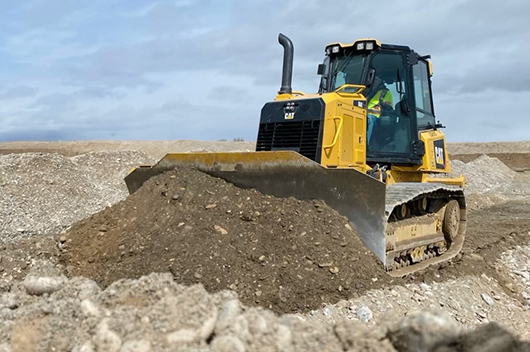
To address the problem, ITD’s Office of Civil Rights, in partnership with the Idaho Workforce Development Council, Idaho Associated General Contractors, Idaho Native American Tribes, Baker Technical Institute, College of Eastern Idaho, and local highway construction contractors, implemented the ICONIC program.
“This program could not have been successful without established partnerships,” ITD Civil Rights Manager Jessika Phillips said.
Although the program has been in existence for a few years, the 2022 version was different in that courses were offered in each corner of the state (Idaho Falls in March/April, Boise in April/May & Coeur d’Alene in June/July). Having multiple locations allowed students to stay close to home and their families during training. The 2022 program also added hands-on training in multiple trades: heavy equipment operating and concrete cement masonry.
One of the most successful participant locations in 2022 was the ICONIC program delivered to residents in Idaho Falls between March 21 and April 22. Over five weeks and 200+ hours, students received certifications in OSHA-10, forklift, Hazardous Waste Operations Emergency Response, flagging, and first-aid/CPR during in-the-field sessions. Classroom instruction included reading blueprints, construction-applied math, confined spaces, trenching and shoring, securing loads, pre-trip and chains checks, and honing career soft skills.
Students removed, formed, poured, and finished a concrete sidewalk at the Blackfoot Rest Area in partnership with District 5 and District 6 staff. Students replaced old, cracked and damaged concrete to create a sidewalk that is now level and free of obstructions for the traveling public accessing the restroom facilities. Students also learned how to operate loaders, dozers, excavators, and skid steers utilizing simulators and getting behind-the-wheel in a land lab. 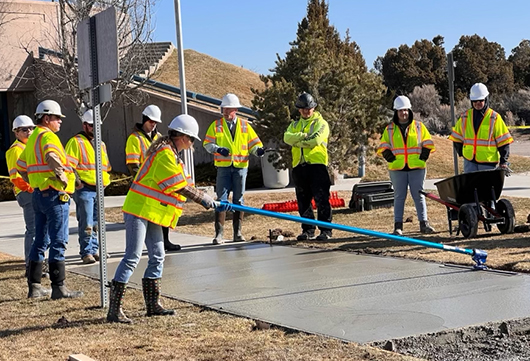
Students networked with contractors on multiple occasions and had the opportunity to demonstrate their skills during Contractor Day. Many students have found employment this way and still work for the contractor to this day.
Fifteen students graduated from this program in 2022.
In the past, female participation has been around 10-15% and minority participation hovered around 20%. During this installment of the program, 40% of those who participated were female and 60% were minorities. Women made up only 11% of the construction industry, according to the Bureau of Labor Statistics 2021 study, while minorities (especially non-Latino/non-Hispanics) are also vastly under-represented.
Eleven of the fifteen graduates were employed in the highway construction industry within 30 days of graduation. More than half of the students have applied to the Idaho Launch Program through the Idaho Workforce Development Council for funding to complete their Commercial Drivers Licenses (CDLs) during the winter-shutdown period this coming fall/winter.
The future for the ICONIC program includes “continuing to build partnerships, seek funding, and grow the program to focus on additional trades within the construction industry and lead the way in equity, safety, mobility, and economic opportunity,” said Phillips.
